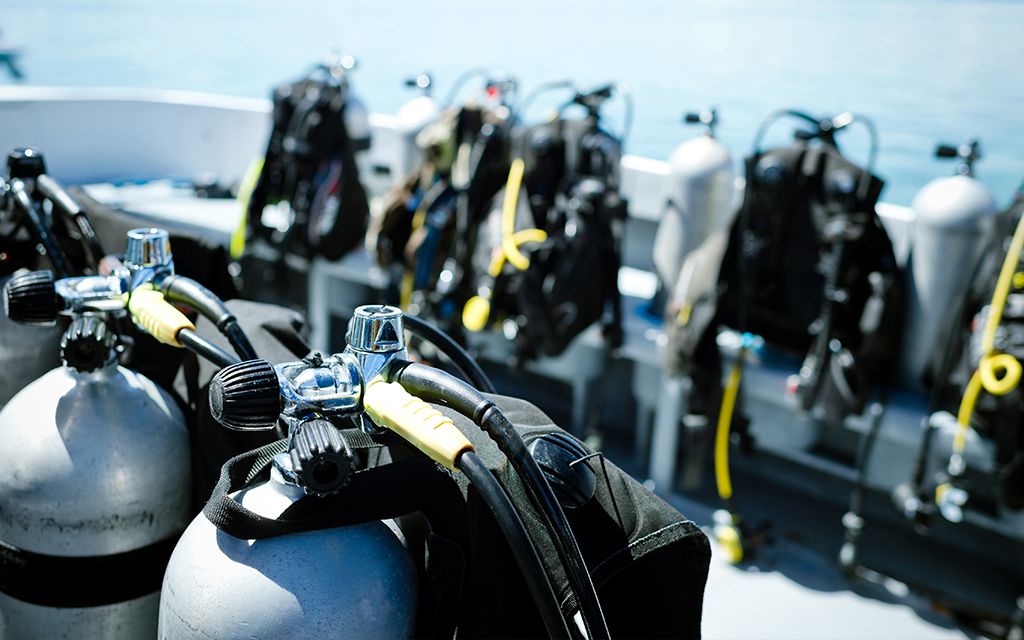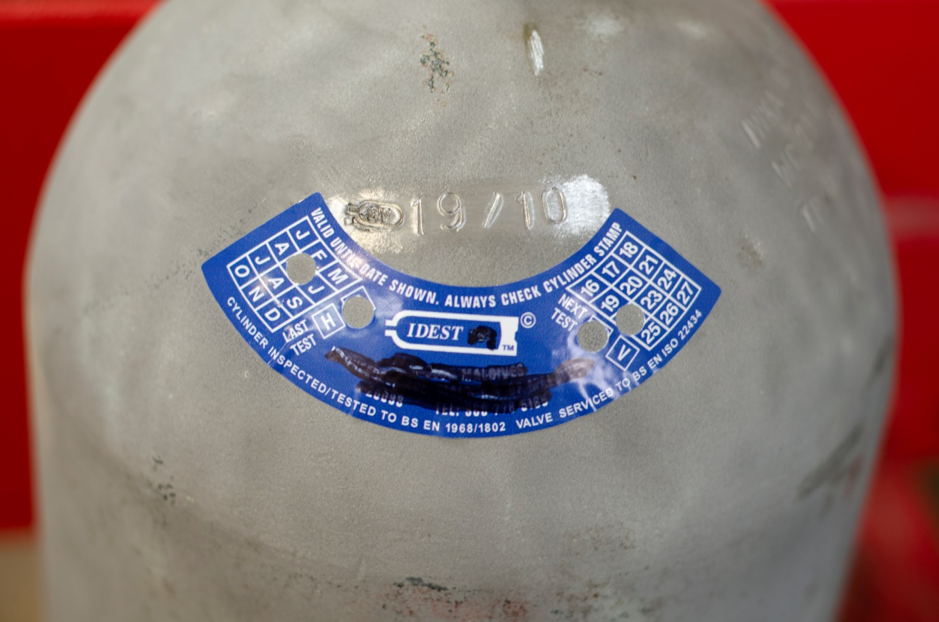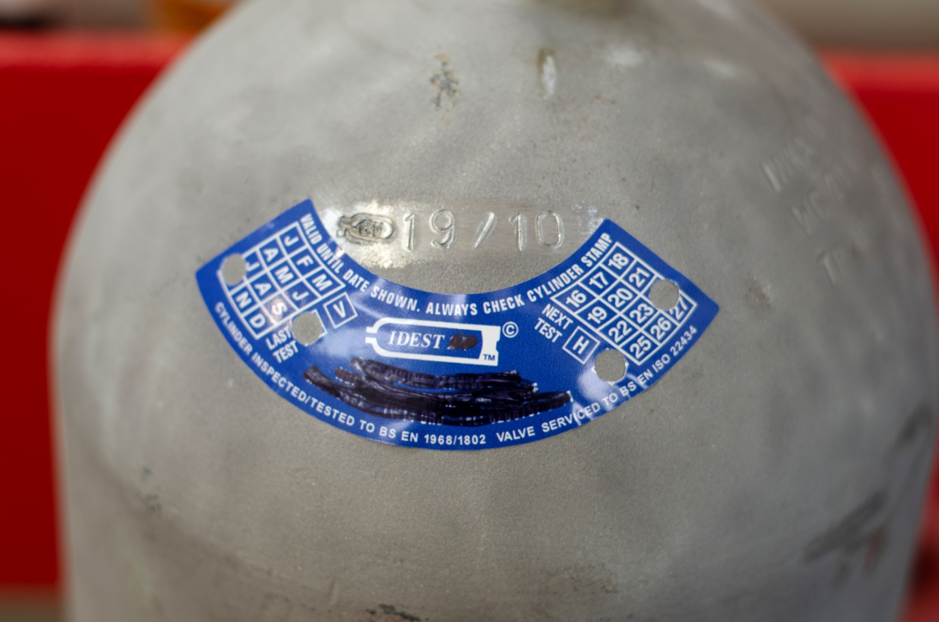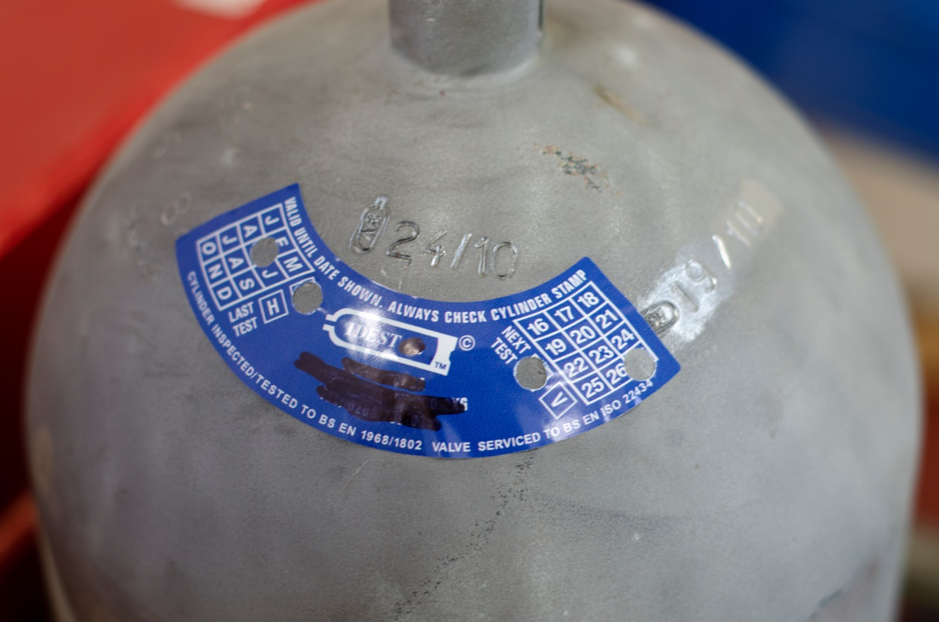
After discussion between IDEST, ASSET and HSE it was agreed to cease stamping diving and breathing gas cylinders after they had passed a visual inspection (aka Periodic Inspection or PI). This was communicated to all IDEST Test Centres by IDEST in May 2019.
The reason for this decision is that many diving companies comply with alternative standards for inspection. Under these standards, the visual inspections can take place at 6-monthly and/or annually periods, unlike amateur diving cylinders that normally require a visual inspection every 30 months.
Many of these commercial cylinders are small, 3-litre cylinders and stamping these on a regular basis would soon render a perfectly good cylinder unfit for use due to the fact that the cylinder shoulder would be full of stamping marks.
As a result, all diving and breathing gas cylinders will no longer have a stamp punched into the shoulder of the cylinder after a successful visual inspection but instead have a label indicating that it has passed the inspection.
New cylinder stamping procedure
IDEST Inspection and Test Centres will apply the IDEST Blue Quadrant sticker, preferably as near as possible, under the last valid hydro-test stamp. This Blue Quadrant sticker will indicate the date of the next test/inspection, the type of test/inspection that has just taken place and the type of test/inspection that is next due. These test/inspection types will be shown as a readable 'V' or an 'H'.
Hydraulic testing (Periodic Inspection And Test or PIAT) of diving and breathing gas cylinders is usually every 5 years unless it comes under another standard. On this occasion, the cylinder will have both a visual inspection and a hydraulic test.
On successful completion of these two procedures, the cylinder shoulder will be stamped with the test centre logo/year (2 digits)/month (2 digits). An IDEST Test Centre will also affix a Blue Quadrant under the metal stamping. This sticker will show an 'H' for 'last test', just conducted, the punched-out month and year of the next test and show a 'V' to indicate that a visual inspection is the 'next test'.
Under the current BS EN ISO 18119:2018 Standard, technicians in UK Test Centres can apply the agreed Risk Assessment Document. This means that if the condition of the cylinder gives cause for concern, the technician can perform a visual inspection. This may occur before the technician is prepared to fill the cylinder, otherwise amateur divers can expect visual inspections (PIs) to be conducted every 30 months.

Label attached after first hydraulic test on 10th month 2019 - 19/10

Label attached after next visual inspection 30 months after the above hydro test

Label attached after second hydraulic test on 10th month 2024 (five years after the first one) 24/10
This guidance applies to IDEST test centres, but other test centres that are UKAS approved might continue to use other means of marking cylinders.
Not yet a BSAC member?
You can do this course by joining BSAC directly or joining your local club.
If you need a hand send your postcode to hello@bsac.com and we'll help you find the right scuba club for you. Or if you fancy a chat call us 0151 350 6226 (Mon - Fri, 9 - 5:30).



